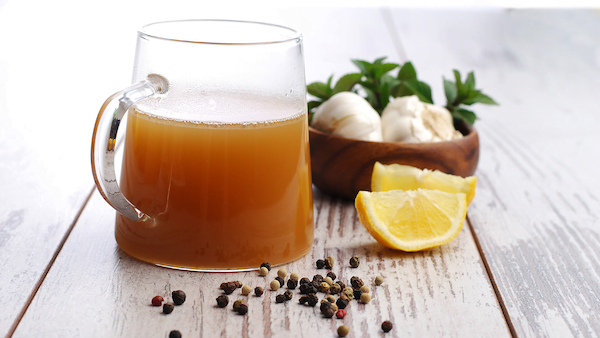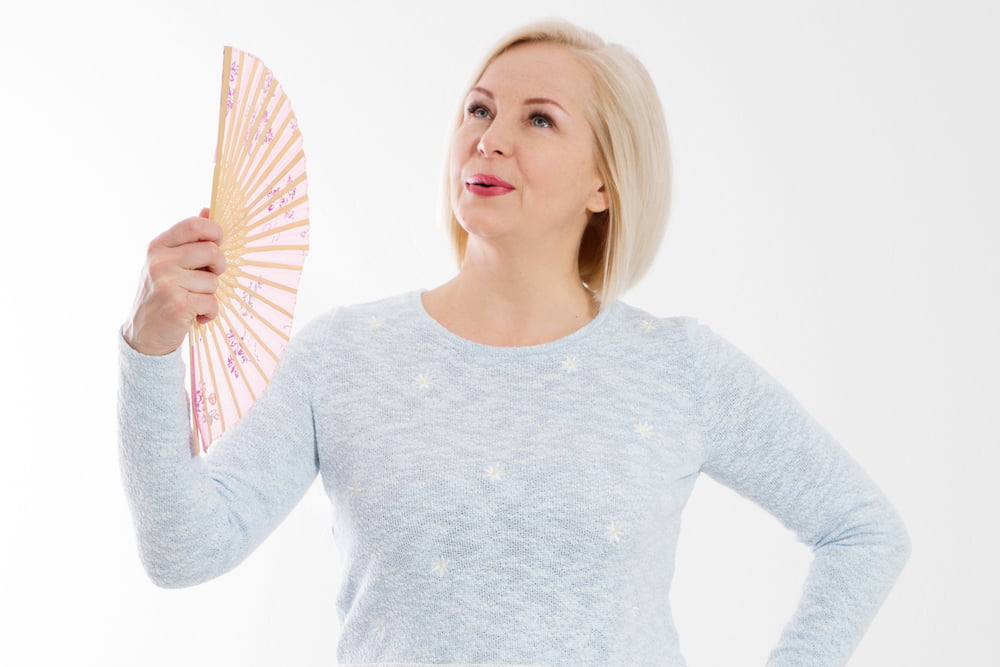Naturopathic Support for Endometriosis & PCOS with Brianna Bryant
Natural remedies for anxiety and depression, and supporting mental health naturally
IBS- bloating, pain & gas oh my….. Natural Medicine solutions to your tummy troubles
Joints, managing pain and inflammation as you age outrageously well
For many people as they age, aches and pains seem to be part of the equation. Sometimes it’s a result of earlier sporting greatness on the netball court or football field and other times it can be a result of poor posture, long years of physical work and more recently too many hours of sitting in front of a computer screen.
Regardless of the cause there are a few options that will assist in reducing the aches and pains. There are diet and lifestyle strategies which can make a big difference as well as bodywork treatments.
First priority in improving joints and probably the most important area to consider is exercise, generally this is the best researched area to reduce pain and improve mobility. Importantly if you have a particular area of concern it’s a good idea to work with someone to build a graded exercise program and gradually build up strength and flexibility. Options could include pilates, yoga, physiotherapy, or specific programs such as Better Bones. Pilates semi-private classes usually involve a small group and may give you additional support in ensuring you are doing exercises safely. Other alternatives could be working with an exercise physiologist or a physiotherapist to design a programme.
If you haven’t exercised much historically one of the easiest options to start with is walking. Start with a ten minute walk round the block or around an oval and then gradually increase the distance you are walking. Even small increases in activity building to 4,000 steps a day will assist in reducing inflammation and the subsequent aches and pains.
Second pillar of supporting your joints is improving your diet and including foods and supplements to provide you with the nutrients needed. Many people talk about fish oils and turmeric for inflammation and pain. For the quantity needed from fish oils you probably need to be including four to five fish meals a week. It can be quite difficult however having trialled a six week period of eating tuna every day for lunch (and you really want more variety) it did improve my skin as well as my overall health, so this one is a great option from diet. Turmeric needs the equivilant of 5g a day so its more difficult to include and its usually recommended you look for a good quality supplement.
In addition to the good quality essential fatty acids and turmeric reviewing your diet to see if there are foods which make your joint pain worse is very helpful. Typically you need to be including a minimum of three cups a day of vegetables as well as a small amount of good quality protein to provide yourself with the nutrients to heal and repair. Some foods can make joint pain worse and it can be surprising options for people. For example if you are prone to gout, foods high in purines (shellfish, asparagus and mushrooms) can be problematic. Ideally track your diet for a week and record symptoms to see if there is a correlation. Usually increasing the amount of fruit and vegetables in the diet and decreasing processed food will see an improvement in the levels of aches and pains as well as your overall health.
Depending on the issue with your joints the addition of either collagen as a supplement or regular intake of bone broth can also see significant improvement. Traditional bone broths are made by boiling bones with aromatic vegetables, water, apple cider vinegar and a little salt. This extracts the collagen, glucosamine and chondroitin from the bones. Making bone broth from the bones and connective tissue is a good way to ensure that all of the animal is utilised for those who choose to eat animal products.
Good bone broth or stock is often the base for soups and stews but it can also be drunk as a warm drink daily for joint and gut health.
The third area to consider is some form of supportive bodywork therapy. Generally if the problem is structural its ideal if you can be assessed by a chiropractor or osteopath. They support patients with manual therapy interventions including exercise prescription and education to improve movement and reduce pain. They can also recommend appropriate treatment going forward whether its remedial massage or some more gentle therapies such as lymphatic massage, reflexology and craniosacral therapy.
- Lymphatic is a gentle style of massage which works on the superficial lymph structures that sit below the skin. This is ideal for anyone recovering from surgery or an injury with significant swelling. The gentle flowing strokes can assist to improve the flow of lymph and reduce swelling and pain.
- Reflexology involves working on the feet and may assist with pain management through pressure on the soles in areas related to the underlying source of pain. Reflexology assists with circulation and increases the flood of blood and nutrients around the body.
- Craniosacral therapy is a type of bodywork that relieves compression in the bones of the head, sacrum and spine. It’s thought that through the gentle manipulation of the bones in the skull, spine, and pelvis, the flow of cerebrospinal fluid in the central nervous system can be balanced which then improve the body’s ability to heal.
To really address aching joints its important that you know what has created the issue and then gradually implement the strategies discussed above. Dietary change is probably the most affordable step, followed by a graded exercise program and then if budget allows add in some supportive bodywork.
Understanding the importance of different probiotic strains
Scientific research has helped to reveal an additional organ system that has been invisible to the naked eye for much of human history: the gut microbiome. Just like we need lungs to breathe and a heart to pump blood around our bodies, we now know that the community of microorganisms living in our gut operates like a vital organ and is just as crucial for our health.
Join Benjamin Makeham from Activated Probiotics in an overview of the microbiome and a look at the incredible differences between probiotic strains and the unique ways they impact health.
The importance of the gut microbiome
When the gut microbiome is healthy, the whole body benefits. However, just like any other organ, the gut microbiome can become disrupted and negatively impact our health. This is referred to as ‘gut dysbiosis’ and it has now been associated with many chronic diseases, including irritable bowel syndrome, depression, asthma, acne, osteoporosis and countless others¹. The rise in gut dysbiosis (and its negative health effects!) are thought to be due to several factors. Changing diets with lower intakes of fibre and unrefined plant foods, stressful lifestyles, low activity levels and increased use of antibiotics – these factors reduce the population and change the types of microorganisms found in the gut, creating gut dysbiosis.
Fortunately, probiotics have emerged as a way to intervene.
What is a probiotic and how do they work?
Probiotics are living microorganisms that have been found to be beneficial to health when taken as a supplement. Within the gut, probiotics that we take and the microorganisms that live in our body perform many different biological actions that can influence our health.
They use the food we eat to grow and replicate and, through this process, they produce compounds called metabolites which we absorb like nutrients. These metabolites can travel through circulation and interact with other body systems. They can also interact with the different types of cells in our gut, including:
- The cells which make up the lining of the intestines
- Nerve cells which connect the digestive tract to the brain
- Immune cells stationed in the gut to prevent infections from the outside world
These interactions can change how the cells function and the messages they are sending to other parts of the body. This interaction with the rest of the body means that the microorganisms and probiotic bacteria in the gut can impact other organ systems and, as a result, many aspects of human health. Different probiotic supplements will offer different health benefits, and this all depends on the probiotic strains being used.
What is a probiotic strain?
As in the plant kingdom, probiotic bacteria are classified according to the family, genus and species they belong to. Bacteria from the Bifidobacterium genus are commonly found in probiotic supplements. There are over 24 different species of Bifidobacterium that can be used, such as Bifidobacterium breve, Bifidobacterium longum and Bifidobacterium infantis. Despite being similar, they all have noticeable differences.
Interestingly, bacteria within the same species can still be quite different. For that reason, they are further classified into individual strains such as Bifidobacterium breve BR03 or Bifidobacterium breve B632 (with the BR03 and B632 being the strain names).
Even if two probiotics are of the same species, the genetic variation between different strains can be as significant as the difference between a human and a lemur. Because of these differences, each strain of probiotic bacteria will perform unique biological actions in the gut and therefore offer different health benefits. Just like medications, not all probiotics work in the same way.
To understand this further, let’s breakdown the aspects of Bifidobacterium breve BR03’s name:
Bifidobacterium is the genus. The genus can be thought of as a school that similar bacteria attend.
Breve is the species. Each species is a specific classroom at the Bifidobacterium school. Everyone in the class has similar interests and gets along really well, but all of the students are still unique individuals.
BR03 is the specific strain. The strains are the individual students within the breve classroom, who each have different talents, do different things and get different grades.
Without careful strain selection, you don’t know if you’re selecting a student who is good at maths or a student who is better at history.
What are some strain-specific health benefits of probiotics?
Despite sounding very similar, strains of the same probiotic species can behave very differently in the gut and will offer their own set of different health benefits. Because of their significant differences, we cannot assume that they will share any of the same benefits. Scientific research allows us to study each specific probiotic strain, identify their unique biological actions and understand how they impact our health.
Knowing this information helps us to select probiotic strains that will address our specific set of health concerns and improve our health in a targeted way. When a probiotic supplement doesn’t identify the specific strains being used, it is very difficult to know how they will benefit your health (if at all). Generalised statements about the benefits of a species, such as “acidophilus is good for people with IBS” or “plantarum is good for your mood”, are often incorrect. Quality research investigating the benefits of a probiotic will always be attached to a specific strain or a group of strains that have been researched together, not the species.
What areas of health can be targeted with specific probiotic strains?
While there are many strains that possess the ability to support our digestive health in some way, there are also specific strains which can target aspects of human health well beyond the gut.
Eczema
For example, Lactobacillus salivarius LS01 is a probiotic strain which has been shown to help regulate the immune response that contributes to eczema in the skin². In a human clinical trial, LS01 helped to significantly reduce the symptoms of mild eczema after 4 months of treatment when compared to placebo³. The participants who took LS01 had a 52% reduction in the severity of their symptoms.
Mood and sleep
There is a specific combination of probiotic strains that, in a human clinical trial, have been found to help improve mood balance and enhance sleep quality: Lactobacillus plantarum LP01, Lactobacillus rhamnosus LR06, Lactobacillus fermentum LF16 and Bifidobacterium longum BL04. Analysis of each individual strain in this formula found that they possess a range of biological actions which, when working together, impact gut-brain communication and improve mood and sleep.
Acne
Although sounding very similar to Lactobacillus salivarius LS01, research has demonstrated a very different biological action for another strain from the salivarius species, Lactobacillus salivarius LS03: it has been found to reduce inflammation associated with acne⁴. In a human clinical trial alongside two other probiotic strains (Bifidobacterium breve BR03 and Lactobacillus casei LC03), LS03 helped to significantly improve the symptoms of acne when compared to placebo⁵. The participants who took this strain-specific probiotic had a 31% reduction in the number of acne lesions after 4 weeks and a 39% reduction after 8 weeks.
Infant colic, muscle recovery and constipation
Bifidobacterium breve BR03 is a probiotic strain which has been widely-researched and found to offer benefits across a number of different aspects of health when paired with different combinations of probiotic strains. As above, it has been used in a strain-specific formulation which has been shown to relieve the symptoms of acne. BR03 has also been found to help reduce crying time in colicky infants when used in combination with Bifidobacterium breve B632. When used alongside Streptococcus thermophilus FP4 it has even been shown to help improve recovery time following exercise. Finally, when Lactobacillus plantarum LP01 was combined with this strain, they helped to relieve constipation and reduce bloating.
There are many more health concerns which can be improved through the use of specific probiotic strains, including bone density, asthma, immune health, IBS, vaginal health and more. With scientific research only scratching the surface of how the gut microbiome affects human health, it is expected that the application of specific probiotic strains for the management of specific health concerns will continue to expand.
How do you choose the best probiotic for you?
While there is a lot of research into the health effects of many different probiotic strains, it can be hard to identify their benefits when reading the label of a probiotic you may have purchased or been prescribed.
If a probiotic supplement has been formulated with researched probiotic strains that offer specific health benefits, this will often be indicated on the label. Look for phrases such as “clinically trialled”, “scientifically researched” or “clinically proven” probiotic strains or probiotic products.
A healthcare practitioner may also be able to provide additional information about the targeted health effects of a strain-specific probiotic that are not included on the label, especially if they are recommending it to you.
Much of the research identifying the health benefits of specific probiotic strains is also publicly available online, and can be a good source of information for those interested in learning more. You can start by simply searching the name of the specific probiotic strain and looking for information.
This article originally appeared on the Activated Probiotics Blog in March 2023.
References:
- Anwar, H., Irfan, S., Hussain, G., Naeem Faisal, M., Muzaffar, H., Mustafa, I., Mukhtar, I., Malik, S., & Irfan Ullah, M. (2020). Gut Microbiome: A New Organ System in Body. In Parasitology and Microbiology Research (pp. 1–20). IntechOpen.
- Drago L, Nicola L, Iemoli E, et al. Strain-dependent release of cytokines modulated by Lactobacillus salivarius human isolates in an in vitro model. BMC Res Notes. 2010;3:44.
- Drago L, Toscano M, De Vecchi E, Piconi S, Iemoli E. Changing of fecal flora and clinical effect of L. salivarius LS01 in adults with atopic dermatitis. J Clin Gastroenterol. 2012;46(S1):56–63.
- Deidda, F., Amoruso, A., Nicola, S., Graziano, T., Pane, M., & Mogna, L.New Approach in Acne Therapy A Specific Bacteriocin Activity and a Targeted Anti IL-8 Property in Just 1 Probiotic Strain, the L. salivarius LS03. Journal of Clinical Gastroenterology, 2018 52, S78–S81.
- Rinaldi, F., Marotta, L., Mascolo, A., Amoruso, A., Pane, M., Giuliani, G., & Pinto, D. Facial Acne: A Randomized, Double-Blind, Placebo-Controlled Study on the Clinical Efficacy of a Symbiotic Dietary Supplement. Dermatology and Therapy 2022
5 ways to Manage Peri-Menopause and Menopause Symptoms
Many women in their 40s and 50s struggle with low energy, weight gain, poor sleep and brain fog. Not to mention irregular or heavy periods and emotional ups and downs. These symptoms are often grouped as peri-menopause or menopause and considered a normal part of the menopause transition.
It is not surprising that many women feel confused and unsupported during perimenopause and menopause.
I assure my clients these symptoms are not normal, and can be addressed with dietary and life-style changes.
In fact, I created the Menopause Reset Program for this exact reason, empowering them with the knowledge they need to manage their health and regain their vitality.
My top 5 tips for managing menopause symptoms are:
- Look after your liver
Our liver plays an important role in hormone metabolism and detoxification. For women with liver disease or impaired liver function, hormone metabolism and detoxification can be affected, leading to hormonal imbalances and a build-up of toxins. This results in hot flushes, night sweats, mood changes, weight gain, and sleep disturbances.
Women with liver disease or impaired liver function have an increased risk of developing osteoporosis. The liver produces a protein called osteocalcin, which is involved in bone metabolism. Impaired liver function can lead to a decrease in osteocalcin production, which can contribute to decreased bone density.
My tips for liver health:
- Eat 1-2 cups of green leafy vegetables every day, including broccoli, Brussels sprouts, spinach, silver beet, kale and bok choy. Ideally organic and yes, every day!
- Include bitter foods in your diet. Bitter foods include cos lettuce, radicchio, rocket, endive, witlof, watercress and dandelion leaves.
- Swap your coffee for herbal tea or filtered water with fresh lemon
- Look after your gut health
The gut microbiota is a collection of microorganisms that live in your digestive tract and play a crucial role in every aspect of your health and wellbeing. A diet low in whole foods, high in processed foods, sugar and alcohol impact the microbiota. When combined with hormonal changes, this contributes to weight gain, joint pain, and mood changes.
Changing estrogen levels also impact gut permeability, resulting in abdominal pain, bloating and changes to your bowel health. Gut permeability and a microbiota diversity also impact our ability to absorb nutrients, including important nutrients such as calcium and magnesium for bone health.
My top tips for gut health:
- Eat a wide variety of fresh fruit and vegetables, legumes, nuts and seeds to ensure you get the fibre necessary to feed the good bacteria in your gut.
- Add some fermented foods to your diet, such as sauerkraut, kimchi, or beetroot kvass.
- Gardening has been shown to support a healthy gut microbiota.
- Be mindful
Stress has a negative impact on every aspect of our health and well-being. While we can’t eliminate all stress from our lives, we can learn mindfulness techniques to support our nervous system, which has a positive impact on our health.
Build some simple mindful activities into your daily routine, for example.
- Breathing – tune in to your breathing and slow it down. Try some breathing exercises and build them into your daily routine. I get my clients to do specific exercises before bed, before eating, and when walking or in the car, so it becomes routine.
- Be mindful when eating – slow down when eating, chew and taste your food, and sit down when eating. This helps improve your digestion and gut health.
- Get out into nature – While taking a bush walk or a beach stroll is ideal it is not practical for many of us on a day-to-day basis but you can do a few simple things like walking barefoot on grass, having a plant on your desk and taking off your sunglasses in the morning.
- Movement
Regular exercise has so many benefits in menopause, including supporting liver function, cardiovascular health, gut health, and strong bones. It also reduces stress, improved mood and promotes a good night’s sleep.
The type of exercise depends on you, your body, and your current level of fitness. Find exercise you enjoy.
Your exercise routine should include:
- Cardio – walking, swimming or a group fitness class
- Weight-bearing exercise – weights, Pilates or resistance band exercise
- Something to tone your muscles and calm your nervous system like yoga, tai chi or chi gong.
- Get lots of sleep
Getting good quality sleep is essential for your energy levels and cognitive function, but also your mood, hormones, weight, liver and gut health. Many women struggle to fall asleep, wake in the night and can’t get back to sleep, or they may sleep ok but don’t wake up feeling refreshed.
The sleep hormone melatonin is only made in the presence of darkness or muted red light–the colours of sunset. It is essential for sleep; it is also anti-ageing! Melatonin promotes sleep by opposing cortisol, resetting our nervous system and improving our stress response.
My tips for getting a good night’s sleep:
- Eat tryptophan-rich foods. Tryptophan is the precursor to melatonin. These foods include turkey, fish, cashew nuts, almonds, sunflower seeds, oats and prunes.
- Switch off your screens at least 1 hour before bed or turn them to night mode
- Buteyko Breathing exercises before bed. Deep breathing exercises promote relaxation and a deep, rejuvenating sleep.
While there is no one size fits all solution to menopause symptoms, I help my clients regain their vitality through a combination of dietary and lifestyle changes, Buteyko breathing, and supplements and herbal medicine where needed.
If you are struggling with hormonal changes and the symptoms associated with perimenopause and menopause, contact Jean Jarrett at Elemental Health to discuss the right approach for you.
Rest & Repair: Get quality sleep when you are stressed and burnt out – 26 May
Rest & Repair: Get quality sleep when you are stressed and burnt out – 22 May
Managing my Menopause-without Hormones
There is no doubt that some women experience extreme menopausal symptoms, however there are some natural approaches to be considered before addressing the symptoms with hormonal therapy.
Tip for discussion if considering hormonal therapy: Discuss any history of hormone-sensitive cancers, blood clotting disorders, and age over 60 with a GP before using medical hormone therapy.
Generally, in most women menopausal symptoms will gradually decrease over time, it is important to remember this is a natural phase of life and not a disease.
The following are some tried and true solutions for the most common symptoms of menopause.
Insomnia: Make sure you turn off screen time at least 2 hours before bed, stop stimulant tea/coffee/drinks before 3pm and try some herbal tea just before bed. These teas need to be steeped for at least 5 minutes to get the benefits from the natural chemicals. Examples are Chamomile, Lemon Balm, Lavender, Valerian or Vervain. If you wake in the middle of the night try some deep breathing or box breathing techniques to help you relax and get back to sleep. A dab of Lavender oil on the pillow has proven benefits for sleep.
Energy: Make sure you have adequate and quality sleep. A healthful diet will help with energy levels through Menopause. The best researched diet for energy is the Mediterranean diet, it is low in animal meat, high in vegetables, legumes, olive oil and fruit which will ensure the essential nutrients are present to boost energy forming chemicals into the energy systems. See also Exercise.
Exercise: Exercise can reduce the multiple side effects of menopause, including improving energy, reducing weight gain, improving sleep, memory and bone strength. Find an exercise that you enjoy 30-60 minutes of exercise, reduces stress and raises the happy hormone dopamine, exercise could be as simple as turning on your favourite music and dancing around the room.
Hot flushes: Avoid the following foods, chilli, ginger, pepper, alcohol, caffeinated tea/coffee, stimulant drinks. Drink herbal teas containing Sage, Bupleurum or Zizyphus (also known as Chinese Date). In a recent study it was suggested that a B complex multivitamin daily in combination with Fish oil can help relax the nervous system responsible for the vasodilation that causes hot flushes.
Vaginal health: There are some natural lubricants that can be found at your local health food or vitamin store that are non-toxic and female reproductive health friendly. They are made out of vitamin E, Apricot or Sweet almond oil and anti-inflammatory herbal formulas that do not upset the vaginal microflora.
Libido: Libido is complex and may be dependant of space and time for intimacy. Some herbal formulas that may be helpful that have some level of scientific evidence are Panax ginseng, Gingko, Maca, Tribulus and Saffron. Dating back to Adam and Eve, apples have been correlated with a healthier sex drive.
Memory or mood changes: The changes to body and body image, hot flushes and impact of hormonal changes may culminate in mood changes. Green tea contains a mood enhancing and sedative chemical L theanine, a few cups a day could help ease the mind.
Supplements – always talk with your natural therapist to tailor the right nutrients or herbs for your specific concern, particularly if you are regularly taking medication.











